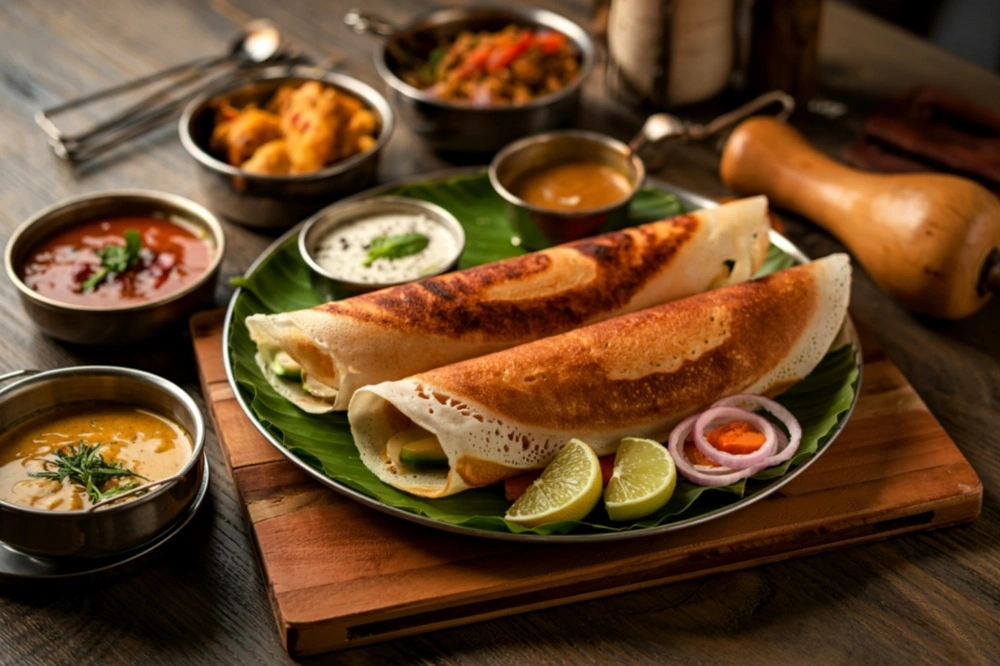South Indian food has a way of staying with you. Do you always end up choosing South Indian food when dining out? Or have you just got the taste of it and can’t wait to try more? This guide to south Indian cuisine for food lovers will help you learn more about your favourites and invite you to experience it all at Swagath Restaurant.
By the end, you’ll not only know what to have in your next visit but also appreciate why these dishes are so deeply loved by people of the world.
South Indian Cuisine & Its Culinary Identity
South Indian cuisine includes a versatile style of cooking. It spans across five culturally rich states: Tamil Nadu, Kerala, Karnataka, Andhra Pradesh, and Telangana. Each regional cuisine brings its own stamp which is shaped by geography, climate, and culture.
The core of south Indian cuisine revolves around staples ingredients like rice, a wide variety of lentils, coconut, tamarind, curry leaves, and mustard seeds. The flavours are bold yet balanced: tangy from tamarind, nutty from coconut, and earthy from spices. Famous cooking techniques include steaming, fermenting, grinding, and tempering that gives these dishes depth.
South Indian food thrives on rice, tangy broths, spicy chutneys, and vegetable-forward meals. It’s vibrant, lighter on the stomach, and naturally packed with nutrition.
Historical & Cultural Context
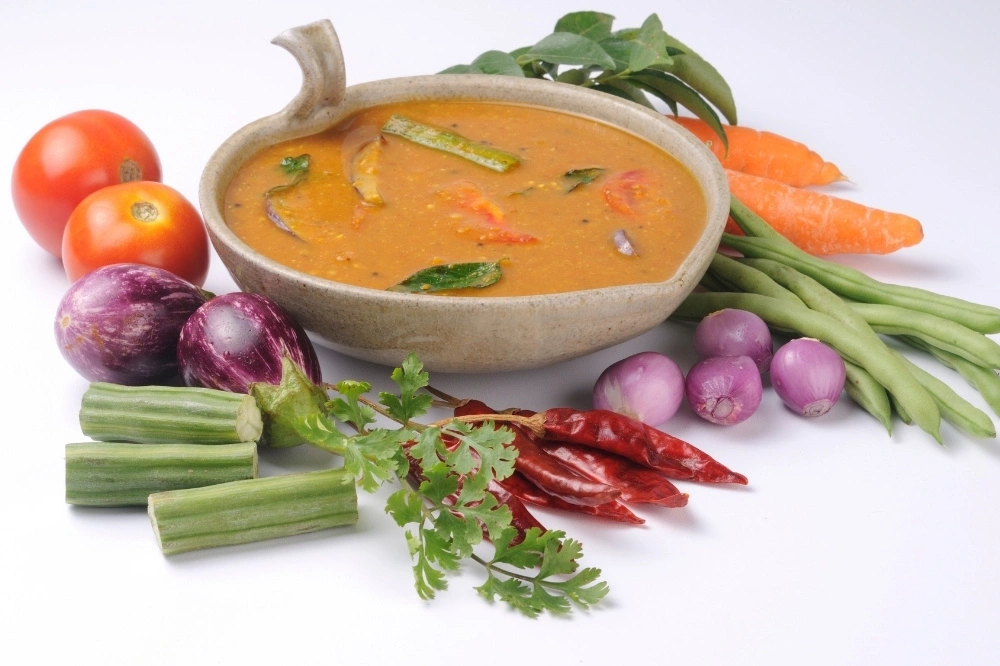
Did you know that South Indian food is more than 4000 years old! It began with the Dravidian culture and is mentioned in Sangam literature, which spoke of serving rice, buttermilk, and vegetables on leaves.
Local spices like turmeric, pepper, and cardamom gave dishes their distinct flavour. Some time later, trading along the Malabar Coast brought new foods in, such as chillies and tomatoes. From here, south Indian cuisines flourished with addition of different cultures.
Many kingdoms and colonial rule added recipes like biryani and kebabs, which quickly gained popularity. Soon, more recipes became part of popular south Indian cuisine for food lovers. Offerings of Pongal, Payasam, or Bisi Bele Bath are made at temples. Traditional festivals keep these dishes alive and unite families through food.
The dining culture is unique too. Traditional south Indian meals are served on banana leaves and eaten by hand. They are often cooked in brass or bronze vessels, which augment the rich taste.
These customs that have been followed since ancient times make South Indian cuisine rich, spiritual, and communal.
Must-Try South Indian Dishes & Regional Styles
South Indian food is vast and diverse, but a few dishes stand out as timeless favourites. Each state also puts its own spin on them, making every region worth exploring:
Breakfast / Tiffin
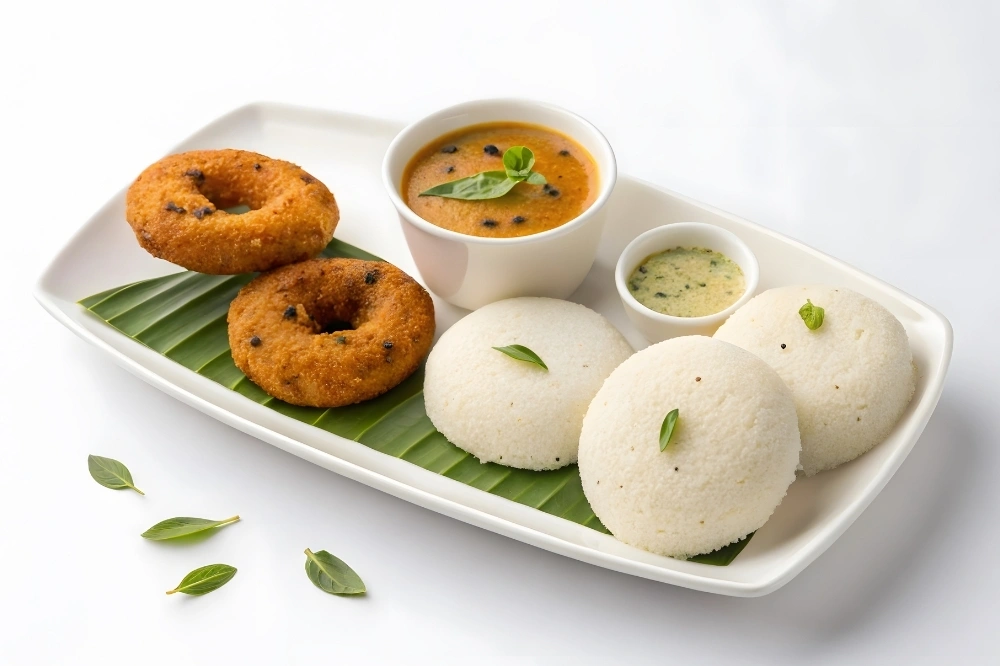
Mornings in the South often start with light yet filling breakfast dishes:
- Idli: Soft, steamed rice cakes, that are served with chutney and sambar. Tamil Nadu is famous for classic idlis, while Karnataka’s rava idli is a quick semolina version.
- Dosa: Thin, crispy crepes that are made from fermented batter. Have you tried Tamil Nadu’s masala dosa yet? It’s iconic! Andhra Pradesh has protein-rich pesarattu and Karnataka offers the buttery set dosa that make you visit the states right away. No need for the long travel, you can get the best and original recipe at Swagath restaurant near you.
- Upma: It is a comforting porridge made from roasted semolina with curry leaves and ginger. Light, delicious, and very nutritious.
- Pongal: Creamy rice and lentil dish, loved across Tamil Nadu during festivals.
- Appam & Idiyappam: These are some of Kerala’s favourites and are often paired with vegetable or coconut milk stews.
- Medu Vada: South Indian fritters made with deep-fried black lentil that are crispy outside and soft inside.
Main / Rice-Based Meals & Curries
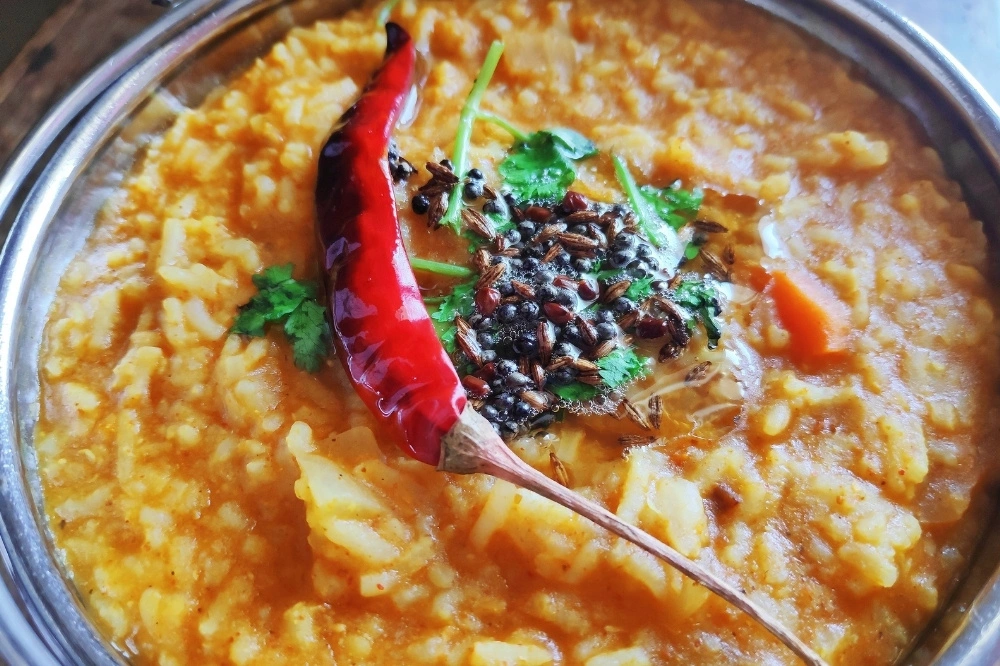
Rice is the heart of South Indian meals, with each state adding its twist:
- Sambar & Rasam: Tamil Nadu offers tangy kuzhambu (tamarind-based curry) and Karnataka’s spicy rasam which are eaten heartily with south Indian staple rice.
- Bisi Bele Bath: A Karnataka special dish made of rice, lentils, and tamarind.
- Hyderabadi Biryani: Famous in Telangana, layered with fragrant rice, meat, saffron, and fresh herbs.
- Chettinad Curries: Hailed from Tamil Nadu, Chettinad curries include fiery chicken or mutton completed with bold spices.
- Kerala Fish Curry: This famous South Indian dish is rich with coconut milk, tamarind, or raw mango for sourness.
- Vegetable Avial & Kurma: Kerala’s famour avial is a mix of vegetables and yoghurt, while kurma is a coconut-based curry enjoyed widely, not only in South India.
Sides, Chutneys & Pickles
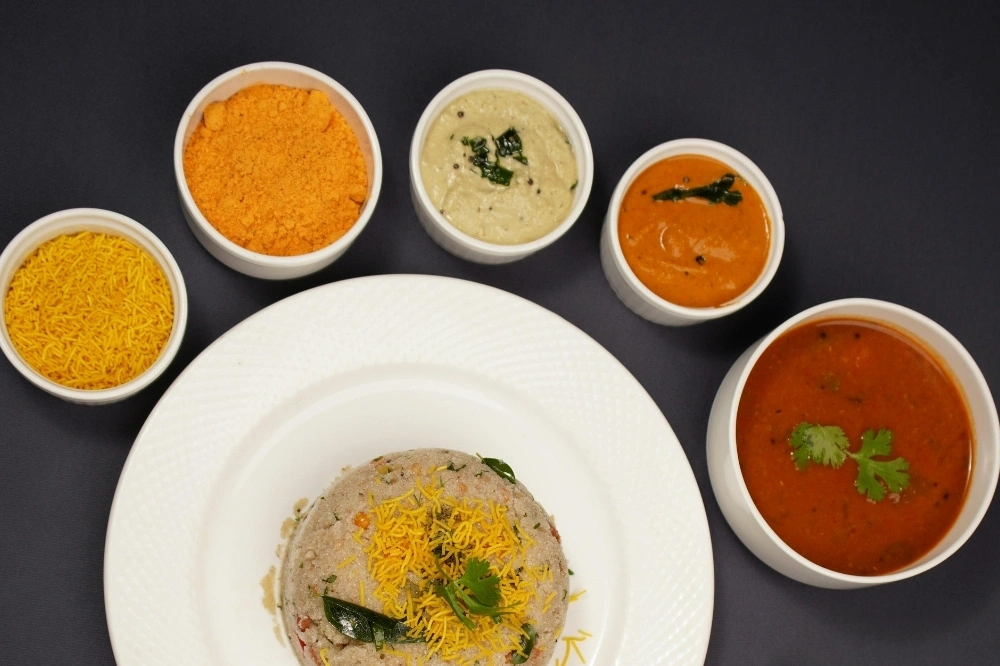
South Indian cuisine for food lovers are incomplete without flavour-packed sides like:
- Coconut Chutney: A classic across all states.
- Tomato & Onion Chutney: Spicy and tangy, best enjoyed with idli and dosa.
- Gunpowder (Podi): Dry lentil spice mix from Andhra, which is eaten with oil or ghee.
- Pickles: All sorts of traditional indian pickles are made in south Indian style, but particularly mango and lemon pickles are favourites across all regions.
- Poriyal & Thoran: These are lightly spiced vegetable stir-fries from Tamil Nadu and Kerala.
Snacks & Street-Style Items
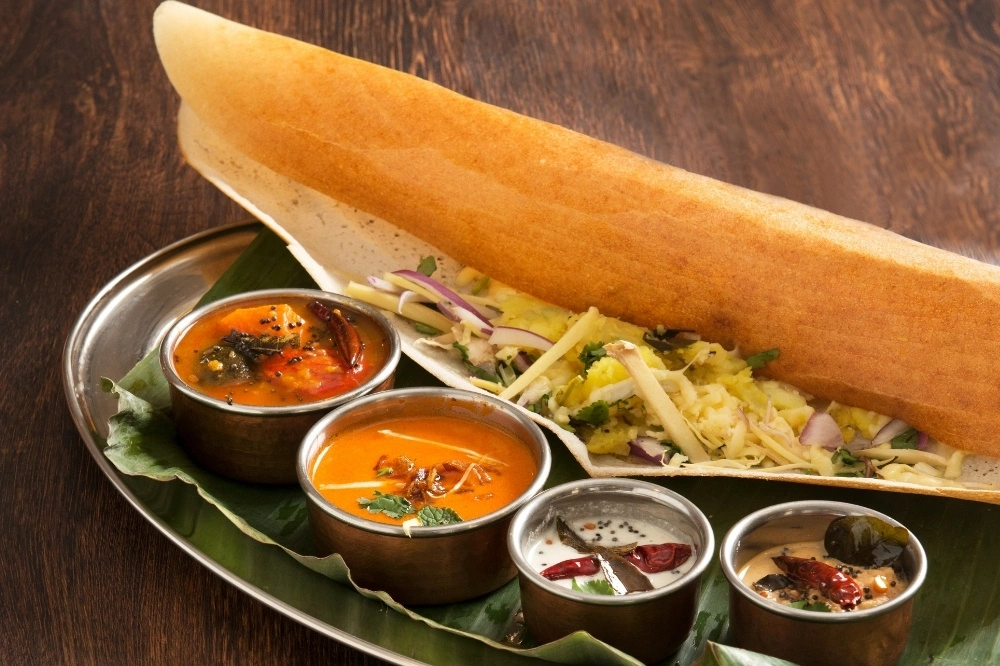
Evenings often call for crispy, spiced bites.
- Masala Dosa: A street-food legend across South India.
- Mysore Bonda: From Karnataka, crisp outside and fluffy inside.
- Masala Vada: Crunchy lentil patties loved in Tamil Nadu.
- Sundal: Seasoned legumes with coconut, often served at temples.
- Paniyaram: Small dumplings from fermented batter, sweet or savoury.
Desserts / Sweets
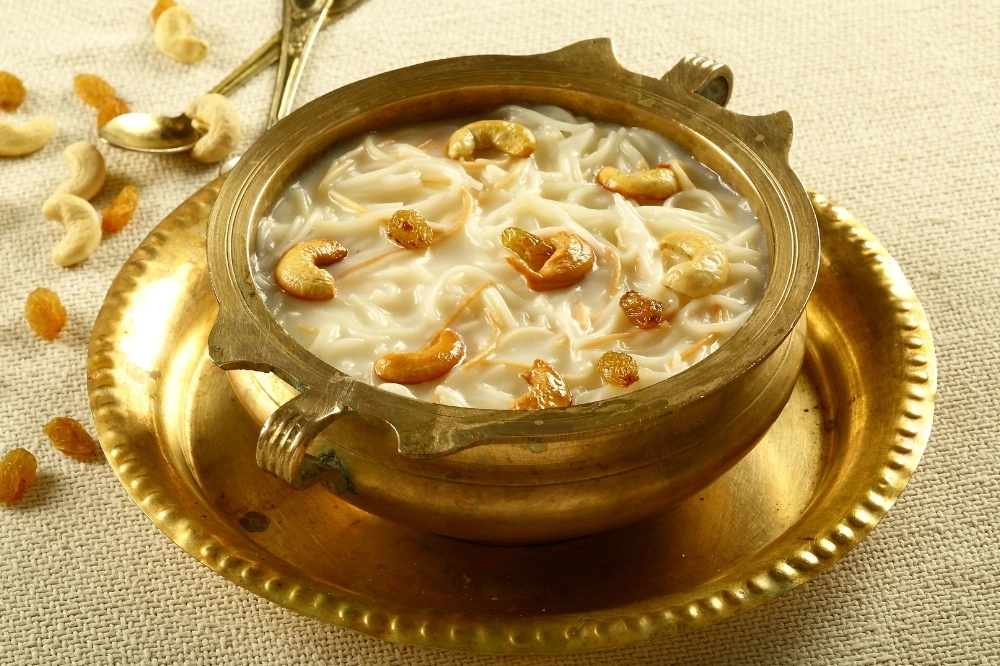
Sweet endings are just as important as the first course. Some of the famous South Indian desserts are:
- Kesari Bath: Semolina pudding from Karnataka, flavoured with saffron and cardamom.
- Payasam: Rice or vermicelli pudding, Kerala’s Onam feast favourite.
- Mysore Pak: Ghee-rich sweet from Karnataka, dense and fudgy.
- Adhirasam: Deep-fried jaggery sweet from Tamil Nadu.
- Coconut Ladoo: Simple, festive treats made with coconut and jaggery.
Ingredients & Pantry Essentials
Cooking authentic South Indian food begins with the right staples:
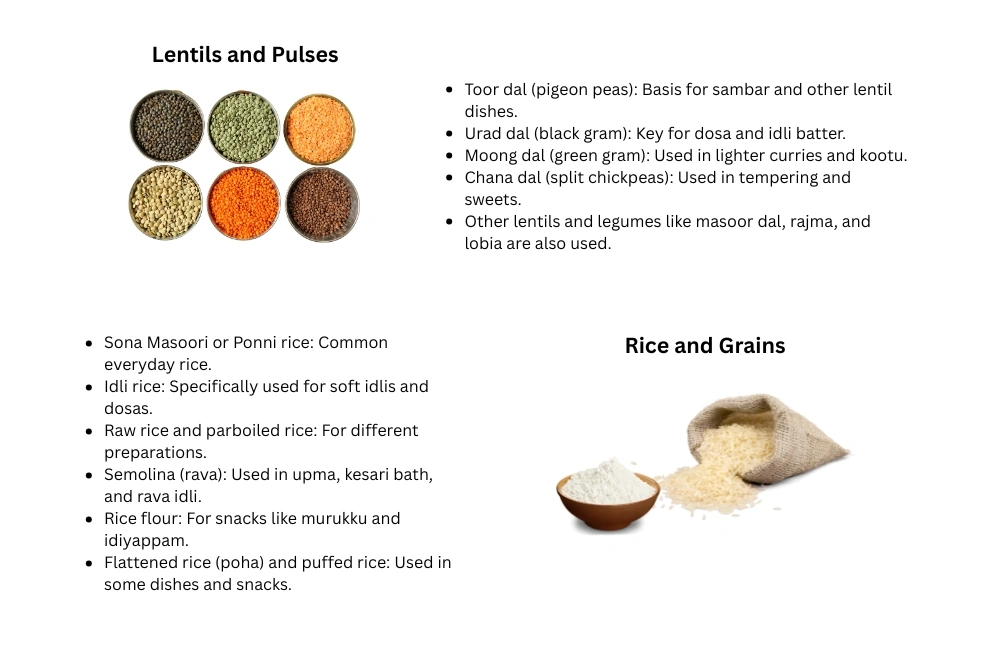
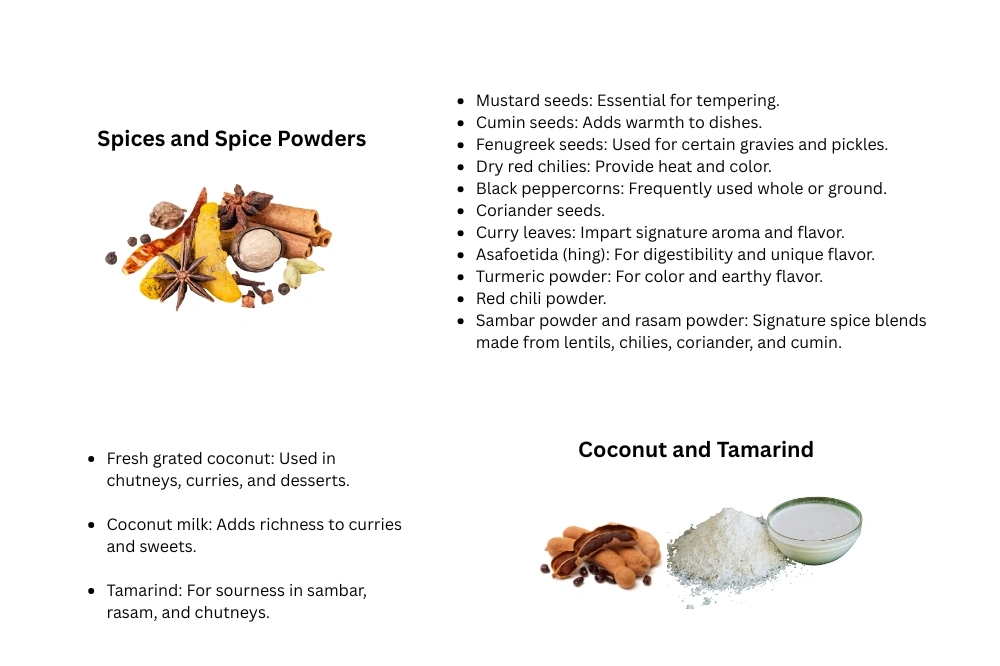
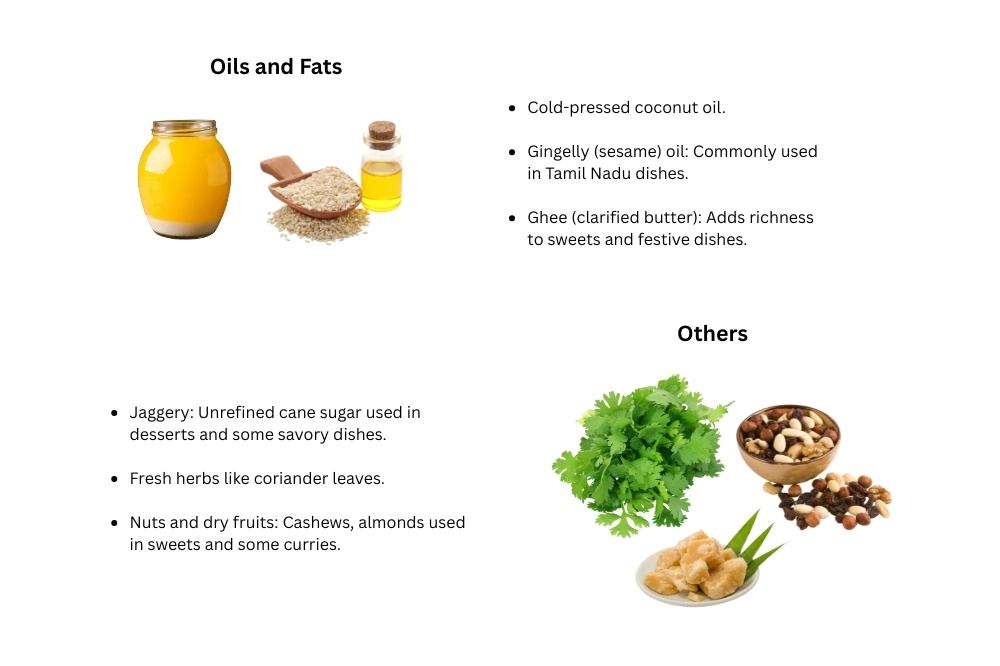
Cooking Techniques & Tips for Authentic Results
Authentic South Indian food is all about the little details in cooking. A few key techniques make all the difference. We, at Swagath, carefully follow the authentic cooking techniques:
- Tempering (Tadka): This is the heart of flavour. Heat oil, add mustard seeds, curry leaves, dried red chillies, and asafoetida, then pour it over dals, vegetables, or chutneys. Tempering is an important cooking step which instantly lifts the taste of the dish.
- Fresh Ingredients: Needless to say, always use fresh coconut, curry leaves, and seasonal vegetables for the rich taste. Use freshly ground spices and cold-pressed oils to give dishes their true character.
- Perfect Batter and Rice: Choose the right rice as the recipe demands. Preferred choices are idli rice for batter and sona masoori for everyday meals. Ferment dosa and idli batter overnight to get that soft rise and crisp finish. The key is to not overferment.
- Balance of Flavours: South Indian food is full of flavours. Ingredients like Tamarind brings tang, jaggery balances sweetness, while regional spice blends like rasam powder or Chettinad masala give depth to the dish.
- Cookware and Method: Clay pots are ideal cookware for south Indian cooking. Heavy pans allow slow, even cooking. Listening to mustard seeds pop or watching oil change colour are small cues that guide the process.
Health & Nutrition Aspects
South Indian food is full of flavours and wholesome. Its ingredients and cooking methods make it naturally healthy and balanced:
- Nutrient-Rich Ingredients
Since now you know which ingredients are used in the south Indian dishes, note the benefits of each ingredient. Like, lentils are rich sources of protein and fibre. Vegetables add vitamins and antioxidants. Coconut provides healthy fats that support heart and digestive health.
- Fermentation and Probiotics
Dishes like idli, dosa, and appam use fermented batter. The fermentation process improves digestion, nutrient absorption, and boosts gut health with natural probiotics.
- Balanced Macronutrients
The all favourite staple rice provides carbs. Lentils add protein to the dishes. Coconut offers healthy fats. Sambar and rasam add fibre, vitamins, and minerals together.
- Healing Spices
The spices used in the South Indian cuisine like turmeric, ginger, cumin, and black pepper reportedly fight inflammation and improve immunity. They also aid digestion by stimulating natural digestive enzymes.
- Heart and Digestive Health
Coconut oil, sesame oil, and tempering spices promote heart health, regulate cholesterol, and make meals lighter and easier to digest.
- Weight and Blood Sugar Management
Dishes like Idli and dosa are light, fibre-rich, and low in fat. That’s why they are highly recommended as balanced diet. Balanced meals help you manage weight and support steady energy.
South Indian Fine Dining at Swagath Restaurant
Fine dining with South Indian cuisine is about elevating tradition while keeping it authentic. At Swagath Restaurant, dishes like masala dosa, Kerala fish curry, fluffy appams, and prawn gassi are served with care and creativity. Freshly ground spices, fermented batter, and seasonal produce ensure every plate is true to its roots. For food lovers seeking authentic South Indian food in a fine dining restaurant, Swagath is the perfect destination.
You Are Invited!
South Indian cuisine is more than just food. It is the preserved history, culture, and community values of our people served on a plate.
If you’re ready to experience these flavours in their most authentic form, visit us. Explore the dishes you’ve just read about, share a meal with family or friends, and let the taste of South India leave its mark on you.
What’s your favourite South Indian dish? Share your thoughts, and perhaps we’ll serve it for you at your next visit.
